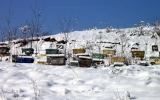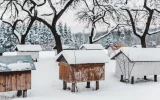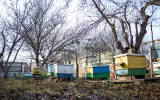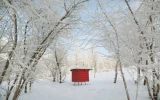At What Temperature Should I Winterize My Beehive?
Wintertime could be an exciting thing for us, but never for bees. They spent more than months in advance preparing for the winter season, and it’s important for beekeepers to do their part in ensuring that hives stay warm throughout the cold months.
You can start to winterize your beehive at 50 degrees Fahrenheit or lower. If the temperature dips even lower, you’ll need to take further steps to insulate and protect your bees from the cold. This could be around fall or the end of summer when the temperatures start to drop.
Different areas will require different precautions. In colder climates, you’ll need to take more extensive steps such as wrapping the hive in insulation, whereas in warmer climates you may only need to add a layer of protection with tar paper or plastic sheeting.
Summary
- In the late summer or early fall, when the temperature begins to fall below 64 degrees Fahrenheit, begin winterizing your beehive.
- One of the most effective methods for ensuring your bees stay warm is to insulate the hive.
- Check your hive's honey reserves before winter arrives to make sure they are sufficient for feeding.
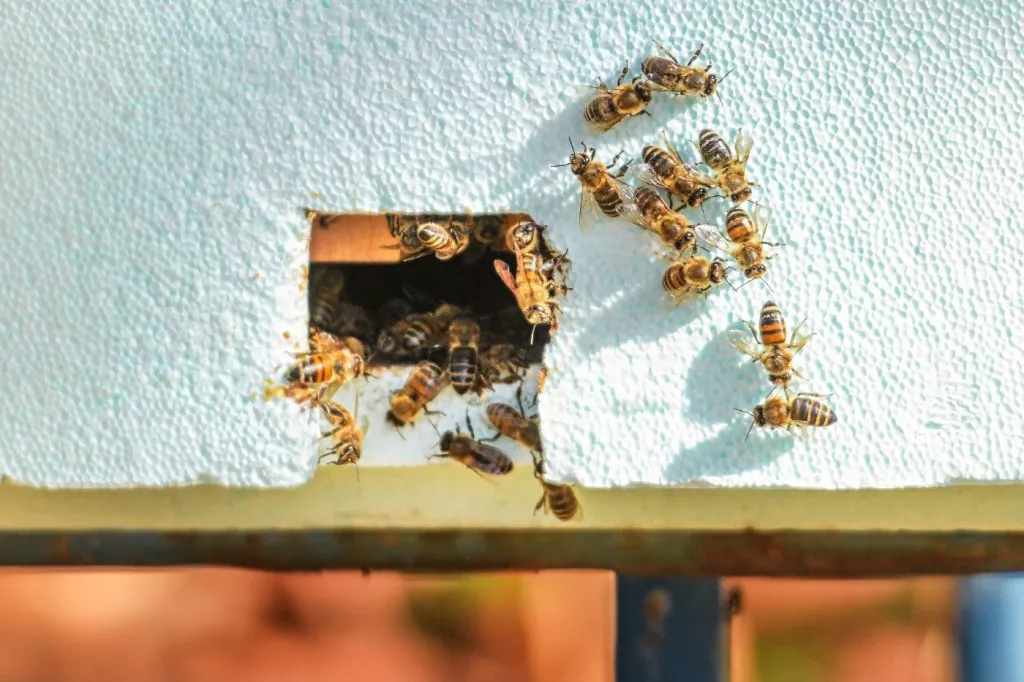
On this page:
When To Start Winterizing Your Beehive
Generally, you’ll want to start winterizing in late summer or early fall, when temperatures start to drop below 64 degrees Fahrenheit. The ideal time to start winterizing your beehive depends on the climate you’re in and how cold it gets.
When the temperature reaches 50 degrees Fahrenheit or lower, it would be difficult for bees to move around and keep the hive temperature warm. It’s recommended that you winterize the beehive before this temperature is reached in order to give your bees the best chance of surviving the winter.
Aside from knowing the season and the temperature, there are also some key signs that tell you that winter is coming and it’s time to start preparing your beehive. These signs include reduced activity in the hive, the bees clustering around the queen to keep her warm, and a dwindling food supply.
It’s important to be vigilant in keeping an eye on the temperature, weather patterns, and other signs that winter is coming. With the right preparation and care, you can give your bees the best chance of surviving the winter and having a productive season.
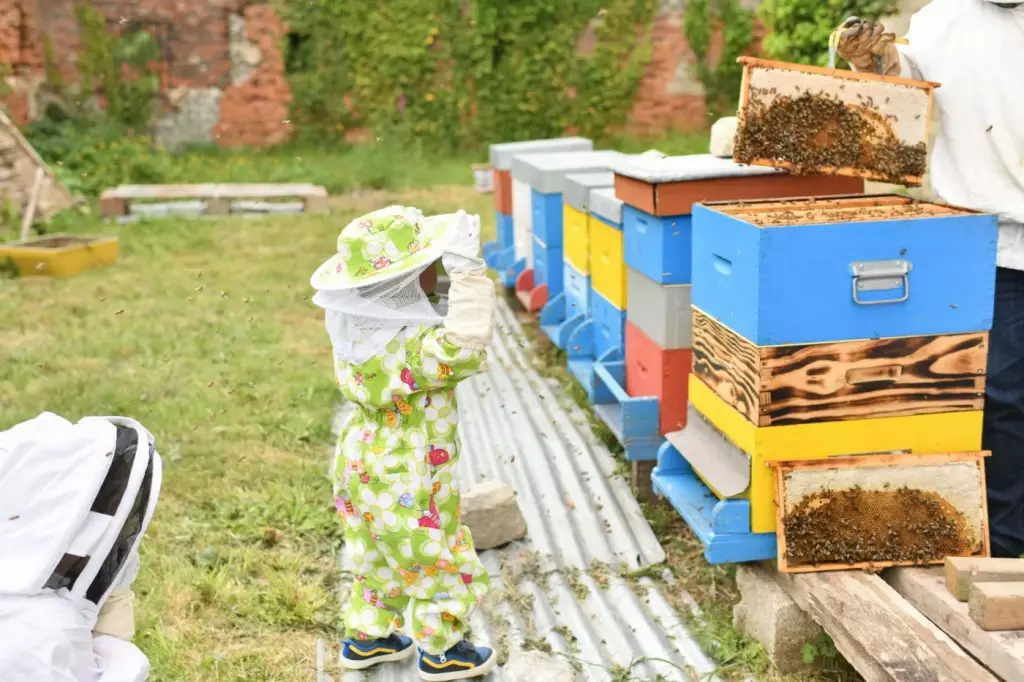
Tips for Winterizing Your Beehive
For successful winterization, there are some steps beekeepers need to follow in order to prepare the hive during the cold months. As the cold months last for months, keeping your beehive in the best condition is crucial.
Here are a few tips for winterizing your beehive:
Secure Your beehives
Make sure that your beehives are securely mounted and level, as the wind can blow them off balance if they’re not properly secured.
In some cases, you might want to tie down the hive with a rope to keep it in place or place heavy objects such as bricks above and below the hive for stability.
Cut out old comb
The bees spend a great deal of time and energy maintaining their comb during the summer months, which can leave behind old wax and debris that needs to be removed before winter. Cutting out old comb ensures that your hive stays clean and healthy going into the colder months.
Insulate the hive
Adding insulation to the hive can be one of the best ways to ensure that your bees stay warm. You can use materials such as straw, sawdust, foam board, or even a tarp to wrap around the hive and protect it from cold weather.
You can use tar paper or plastic sheeting to cover the hive entrance, which will keep the wind from blowing directly into the hive. Make sure that the covering is secured tightly so that it won’t be blown away and leave your bees exposed to cold air.
Provide adequate food
Before winter comes, you should make sure that your bees have enough food to get them through a long winter. During the summer, you should feed your bees sugar syrup or honey so that they have an ample supply of food going into the colder months.
In this case, you should leave their honey alone and only feed them with sugar syrup or pollen substitutes when in need. This will give your bees a better chance of surviving the winter and having a successful season.
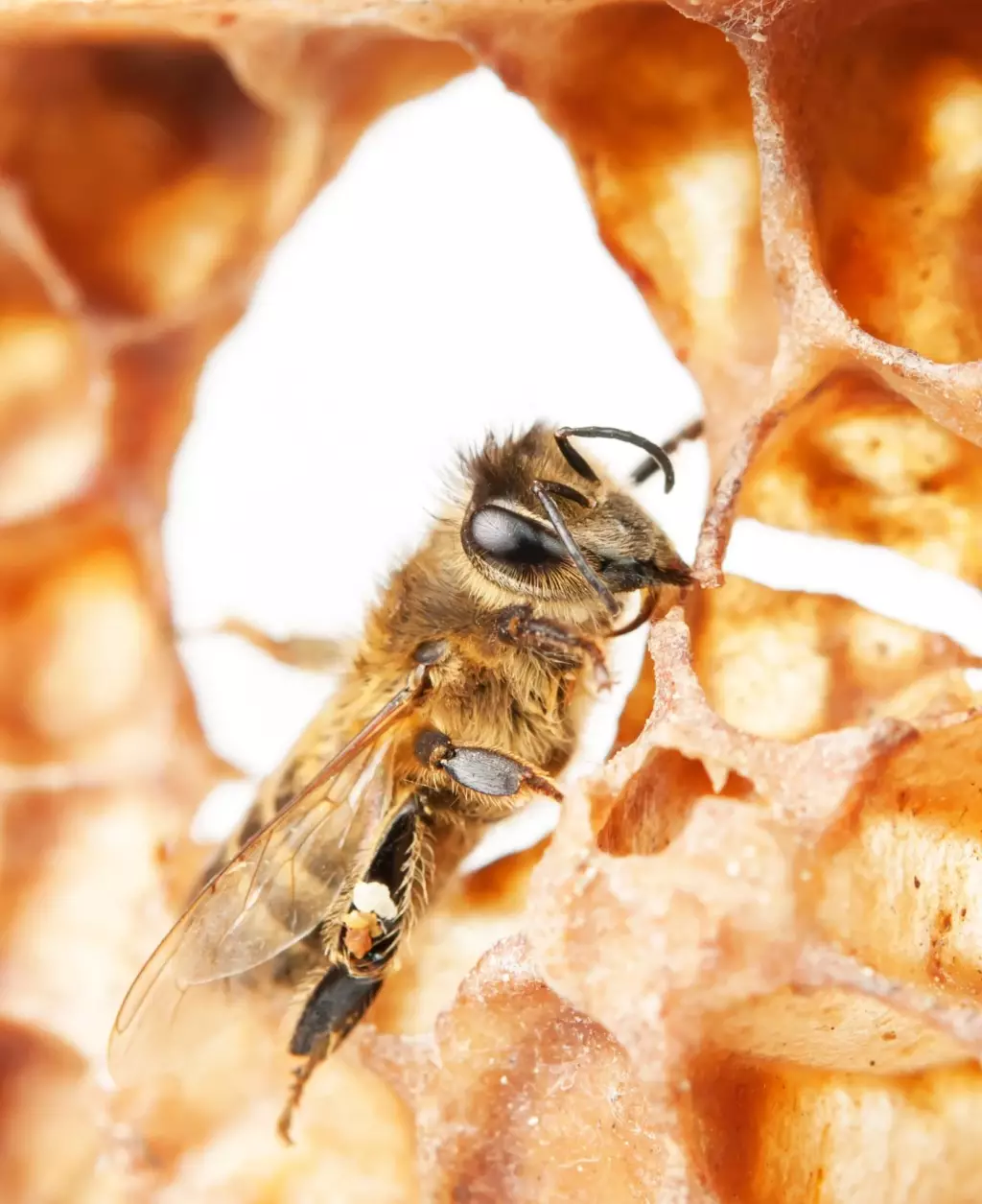
Keep the hive compact
Remove any excess space in the hive, as this can make it harder for bees to stay warm. Make sure that the hive is tightly packed with bees, remove empty frames; and make sure that the bees are clustered together.
Take a closer look at the beehive frames and make sure that the bees have enough space for them to move around and create wax comb.
Monitor your hive
During the winter, you should check in on the hive at regular intervals to make sure that the bees are doing well.
You can check for signs of disease, look for any dead bees or mites that might have gotten in the hive, and make sure that the bees are staying warm. This can include using mite controls before the cold weather comes, and keeping an eye out for any diseases or pests that can be detrimental to the hive.
How To Check Honey Stores for Feeding
Before winter comes, you should check the honey stores in your hive to make sure that they are adequate enough for feeding. As we all know, it would take bees to prepare for months before winter arrives, so it’s important to check the stores and make sure they have enough food going into the colder months.
Here are the types of feeding you should consider for your bee colony:
Fall feeding
When the temperature reaches 50 degrees Fahrenheit, you may want to start feeding your honeybees a ratio of 2:1 sugar-water syrup. This can be a thicker syrup mixture, unlike what beekeepers do during the spring, which is a 1:1 ratio. The explanation behind it is that the bees will use more energy, wherein this sugar-water syrup mixture will serve as a great alternative to nectar.
However, never use raw sugar. Other sugars may cause stomach irritation in bees, so use beet sugar or those directly refined from white cane.
Winter feeding
As winter approaches and the temperature drops below 50 degrees Fahrenheit, you should stop giving sugar syrup to the bees. Bees are supposed to use their energy to provide heat to the hive and conserve their honey stores for food.
You can instead offer bee cakes if a winter feeding is necessary. However, only provide a small amount so that the bees do not become dependent on it and instead conserve their energy to keep the hive warm.
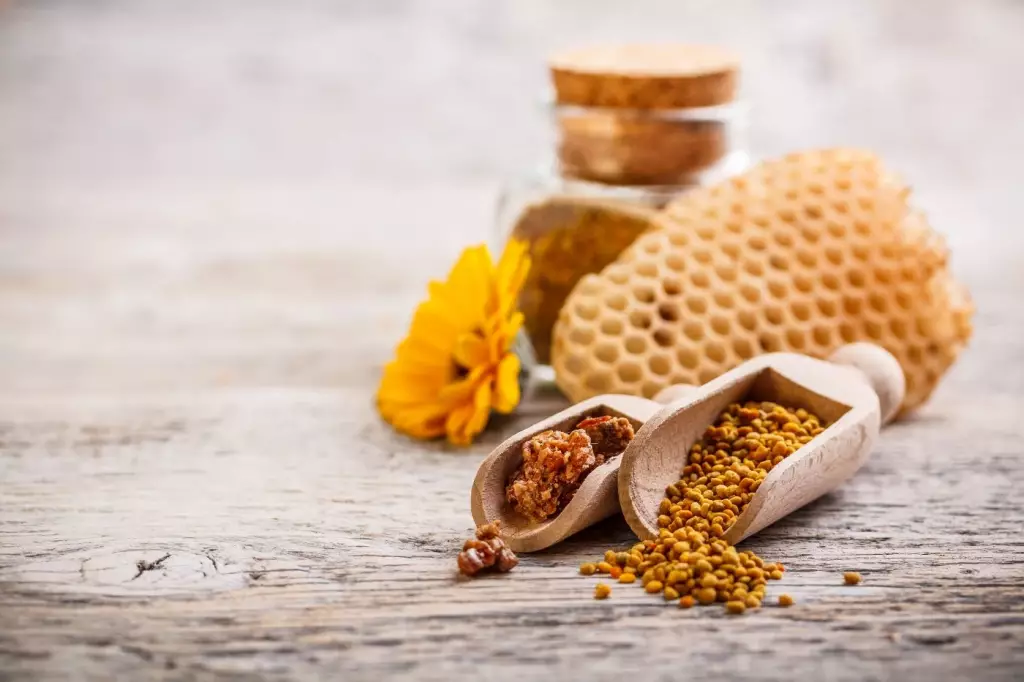
Pollen during winter
During winter, the temperature begins to drop below 0 degrees Celsius, and your bees may need extra energy to survive. As much as pollen is a bee's main source of protein, feeding them during the winter is not recommended.
The development of baby bees is dependent on pollen. This can result in bee population growth, which is what we're trying to avoid during the winter.
